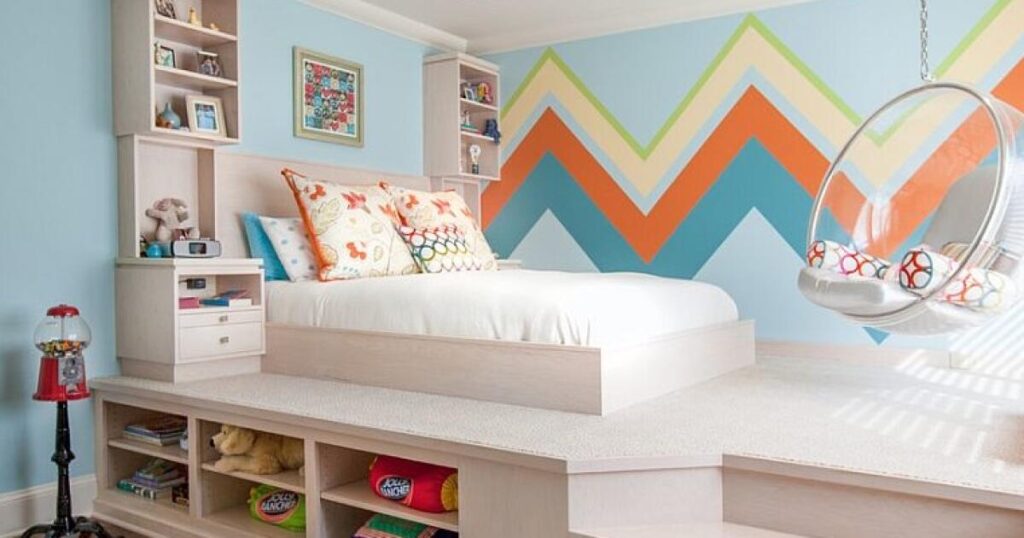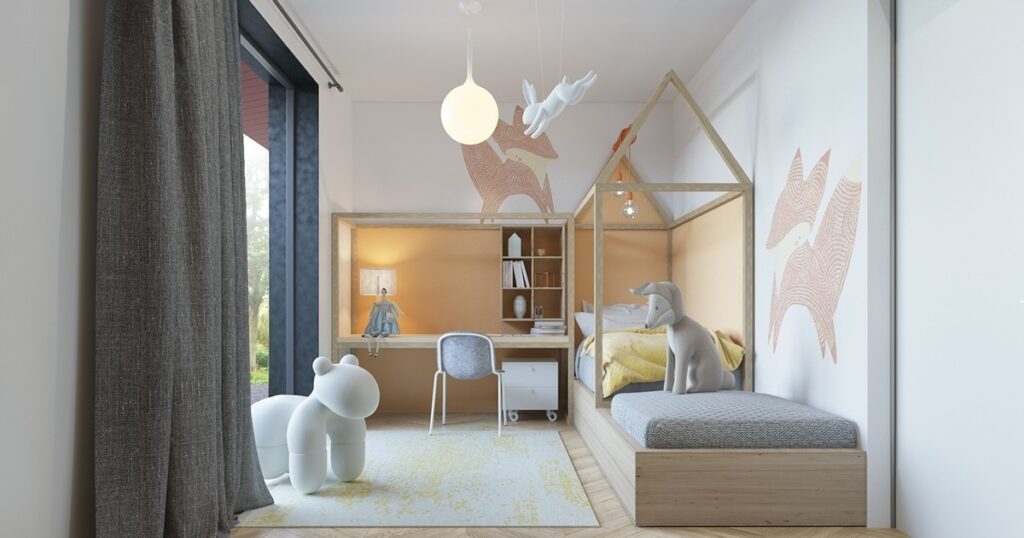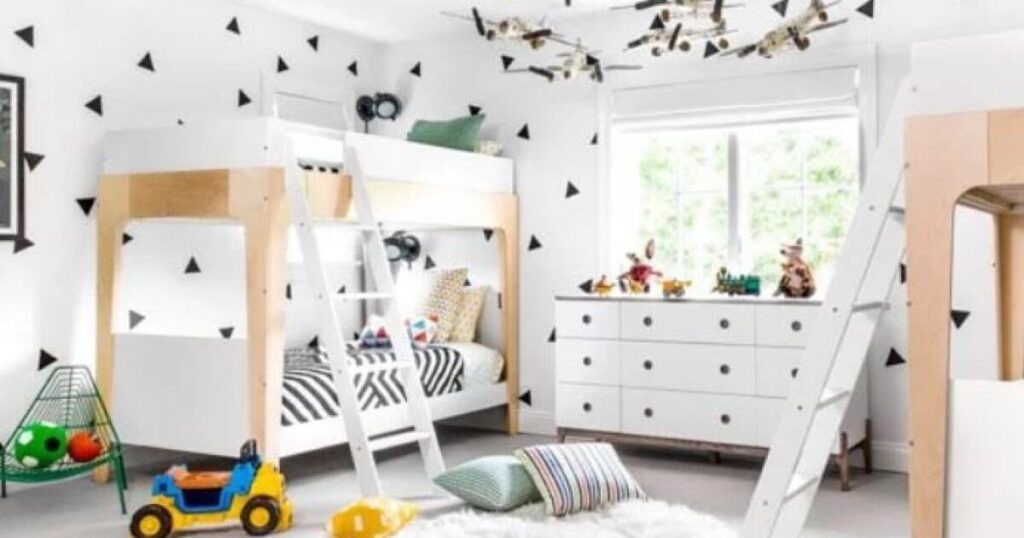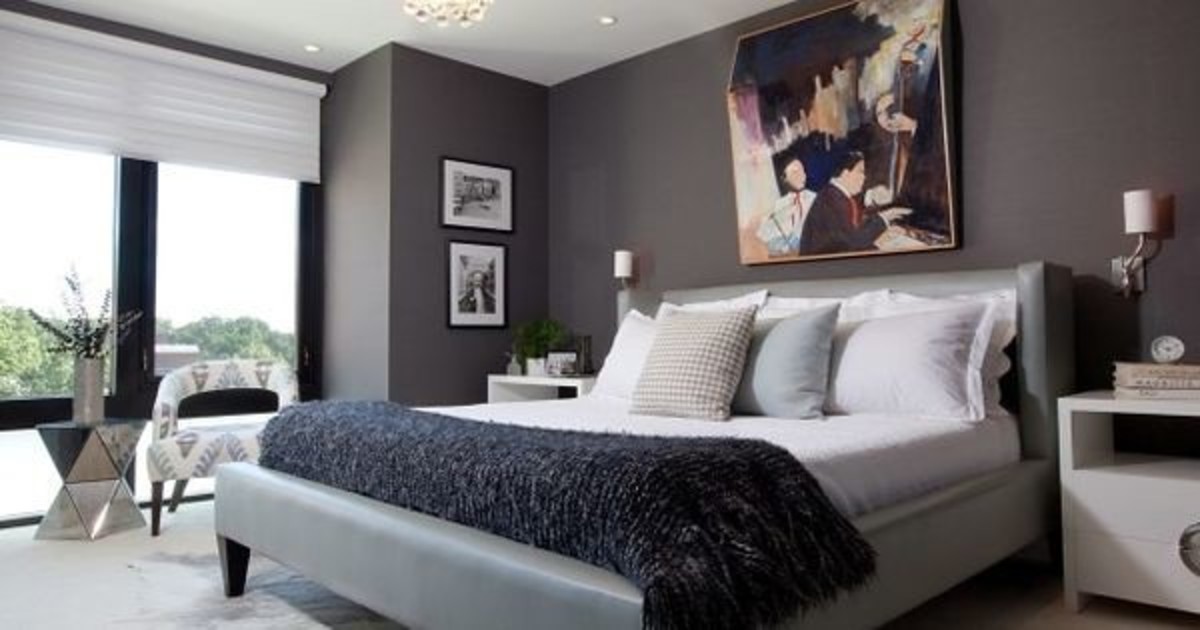Decorating a child bedroom is a chance to make both imaginative and functional space. With a properly planned children room, your child will get creative, feel safe and the environment will adjust as your child develops. This is inspired by famous interior designers and other authoritative sources which present some of the innovative ideas in order to create the best bedroom for your child. Homewavey aims to provide you with the best ideas for your home interior designs.
1. Personalized Themes for Kids’ Bedroom
The interests of children change, but they can be integrated into the theme of the room, so that it might seem that this room belongs to children. It can be the jungle adrenaline, the trip to outer space or the fairy tale kingdom, but fitting the room background to their interests makes them feel as if they own it and feel thrilled.
Tip: Change wall stickers can make wall decoration simple, since their theme can easily change as the interest changes.
2. Multifunctional Furniture for Growing Needs

The children have different needs as they grow up. Look for furniture that has more than one purpose-built-in storage, convertible cribs, fold out desks. This will maximize space and will enable the room to be functional even years to come.
Tips: Lofted bed with a study place underneath may be quite suitable to older children, as they may get a nice place to sleep and a place to work.
3. Incorporating Learning Zones
Make segments of the room that you use in particular activities such as reading, art or play. This zoning enables the kids to concentrate on their job and makes the room tidy.
Tips: Design a reading corner with comfortable chairs and a nice source of light to develop a source of passion towards books.
4. Sustainable and Safe Materials
Prefer those materials that are child safe and non-toxic. Seek out using non-toxic paints, organic fabrics and sustainably sourced wood.
You can get more ideas from Houzz as various ideas provided here include materials that are environmentally friendly in the room of kids.
5. Flexible Design for Changing Ages
Design the room to be as versatile as it can be so it can be upgraded more easily since your kid will grow. Choose neutral colours on walls and larger objects of furniture and decorate with accent items like rugs, curtains or art so that one can easily change tastes as one grows and is changing tastes.
Tips: House Beautiful recommends a classic design that can be able to adjust to the changing tastes of your child.
6. Interactive and Playful Elements
Include imagination triggering and playful items. The room can become more interesting with features such as climbing walls or slides, or walls of chalk.
Tips: Make a little climbing wall that they can play on indoors or slide into a ball pit when they want active playtime.
7. Adequate Storage Solutions

Younger children amass toys, books and garments. Make sure the room provides a lot of storage space such as bins, shelves, and drawers under the bed to store things in order to maintain a clean room.
Tip: Label storage containers so that a child learns how to organize.
8. Safety Comes First
Check to make sure that every furniture is fastened to the wall, sharp ends are padded, and covers around the electric outlets. The most important thing is safety of a child in his bedroom.
Recommendation: Children furniture and toys should be checked regularly in case of recall and the environment should be safe.
9. Involvement in the Kids’Bedroom
Emphasize the theme of the room having the touch of your child by being a part of the design process as this will make him/her feel important.
Activity: Allow them to select two or three color schemes or themes in order to create the feeling of participation.
10. Inspirational Lighting
Make sure that furniture should be against the wall, sharp edges should be padded and power outlets should be plugged. Staying safe is the first priority of a child’s bedroom.
Recommendation: It is necessary to monitor the recall of children products in terms of furniture and toys to have a safe environment. The atmosphere of the room is provided by the lighting. Design with ambient, task and accent light sources to accomplish a comfortable and welcoming feel.
Tips: Fairy lights or display of a star projector (to resonate the feeling of a starry night) can be hung.
Conclusion
Planning a kids bedroom is a matter of a trade off between creative and functional design. Through paying attention to what interests your child, keeping them safe and looking to the future, you can develop a place that is not only fun but functional as well. When choosing between designs keep in mind that the most valuable are the ones that will grow together with your child offering a scenery to their development and creativity. You can read our blogs and get ideas about more interior designs.
To get additional inspiration and professional tips, visit sites such as Elle Decor, House and Garden, which will help you find a plethora of ideas and inspiration about how to decorate a kids bedroom and how to organize, store and furnish it.




